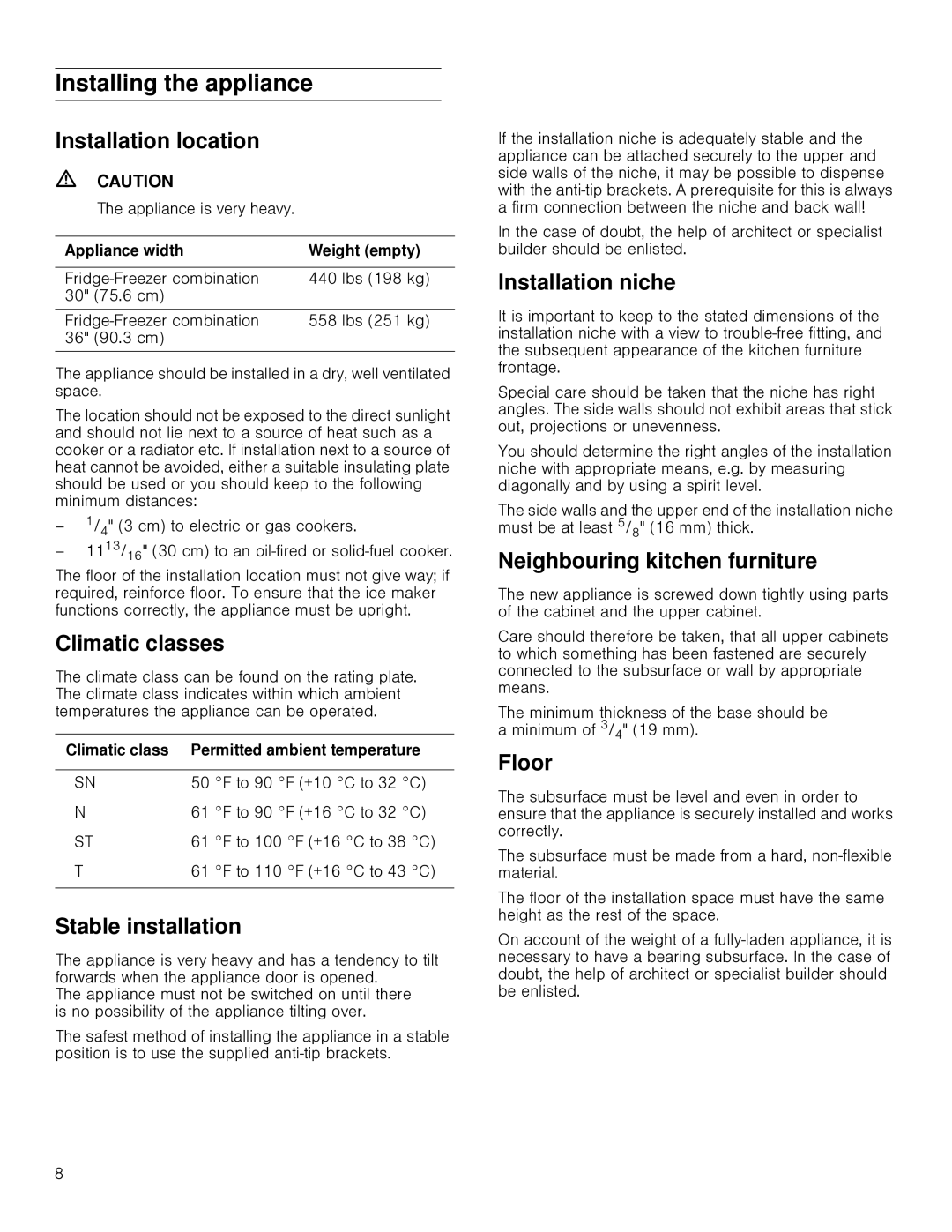RB 492, RB 472 specifications
Gaggenau, a name synonymous with luxury kitchen appliances, offers a range of built-in refrigerators that highlight cutting-edge technology and exceptional design. Among its premium offerings are the RB 472 and RB 492 models, both of which epitomize the brand's commitment to quality and performance.One of the standout features of the Gaggenau RB 472 and RB 492 is their precise temperature control system. These models employ advanced cooling technology that maintains optimal temperatures throughout the fridge, ensuring food stays fresh longer. The dynamic cooling system circulates air evenly, eliminating hot spots and keeping your perishables, from fruits to meats, at their best.
Gaggenau has designed these refrigerators with an eye towards efficiency as well. Both the RB 472 and RB 492 are equipped with energy-efficient compressors that reduce power consumption without compromising performance. This eco-friendly approach not only contributes to lower energy bills but also aligns with Gaggenau’s commitment to sustainability.
Another key characteristic is the user-friendly interface. Both models feature intuitive controls that allow users to easily adjust settings and monitor internal conditions. Whether you’re changing the temperature or activating the holiday mode to maximize storage space, responsiveness and ease of use are guaranteed.
Storage solutions are exceptionally versatile in these models. The RB 472 and RB 492 come with adjustable glass shelves that can be reconfigured to accommodate various items, from large platters to wine bottles. Additionally, the full-length drawers are optimized for storing fruits and vegetables, each with its own humidity control feature to prolong freshness.
The elegant design of Gaggenau’s refrigerators is another defining characteristic. With sleek stainless-steel finishes and integrated handles, these models blend seamlessly into luxury kitchens. Their minimalist aesthetic is complemented by precise engineering, ensuring quiet operation and minimal vibration.
In summary, the Gaggenau RB 472 and RB 492 are premium built-in refrigerators that combine advanced technology, energy efficiency, and stylish design. Their precise temperature control, flexible storage options, user-friendly interface, and environmental consciousness make them ideal choices for those who value quality and performance in their kitchen appliances. With Gaggenau, you are not just investing in a refrigerator; you are enhancing the overall culinary experience.

